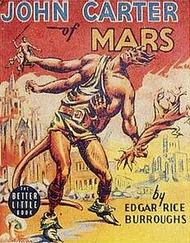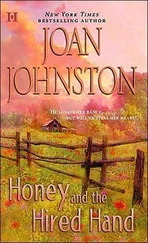Andrew Lang - John Knox and the Reformation
Здесь есть возможность читать онлайн «Andrew Lang - John Knox and the Reformation» — ознакомительный отрывок электронной книги совершенно бесплатно, а после прочтения отрывка купить полную версию. В некоторых случаях можно слушать аудио, скачать через торрент в формате fb2 и присутствует краткое содержание. Жанр: foreign_antique, foreign_prose, на английском языке. Описание произведения, (предисловие) а так же отзывы посетителей доступны на портале библиотеки ЛибКат.
- Название:John Knox and the Reformation
- Автор:
- Жанр:
- Год:неизвестен
- ISBN:нет данных
- Рейтинг книги:4 / 5. Голосов: 1
-
Избранное:Добавить в избранное
- Отзывы:
-
Ваша оценка:
- 80
- 1
- 2
- 3
- 4
- 5
John Knox and the Reformation: краткое содержание, описание и аннотация
Предлагаем к чтению аннотацию, описание, краткое содержание или предисловие (зависит от того, что написал сам автор книги «John Knox and the Reformation»). Если вы не нашли необходимую информацию о книге — напишите в комментариях, мы постараемся отыскать её.
John Knox and the Reformation — читать онлайн ознакомительный отрывок
Ниже представлен текст книги, разбитый по страницам. Система сохранения места последней прочитанной страницы, позволяет с удобством читать онлайн бесплатно книгу «John Knox and the Reformation», без необходимости каждый раз заново искать на чём Вы остановились. Поставьте закладку, и сможете в любой момент перейти на страницу, на которой закончили чтение.
Интервал:
Закладка:
Knox’s personal aspect did not give signs of the uncommon strength which his unceasing labours demanded, but, like many men of energy, he had a perpetual youth of character and vigour. After his death, Peter Young described him as he appeared in his later years. He was somewhat below the “just” standard of height; his limbs were well and elegantly shaped; his shoulders broad, his fingers rather long, his head small, his hair black, his face somewhat swarthy, and not unpleasant to behold. There was a certain geniality in a countenance serious and stern, with a natural dignity and air of command; his eyebrows, when he was in anger, were expressive. His forehead was rather narrow, depressed above the eyebrows; his cheeks were full and ruddy, so that the eyes seemed to retreat into their hollows: they were dark grey, keen, and lively. The face was long, the nose also; the mouth was large, the upper lip being the thicker. The beard was long, rather thick and black, with a few grey hairs in his later years. 11 11 Letter of Young to Beza. Hume Brown, John Knox , ii. 322-24.
The nearest approach to an authentic portrait of Knox is a woodcut, engraved after a sketch from memory by Peter Young, and after another sketch of the same kind by an artist in Edinburgh. Compared with the peevish face of Calvin, also in Beza’s Icones , Knox looks a broad-minded and genial character.
Despite the uncommon length to which Knox carried the contemporary approval of persecution, then almost universal, except among the Anabaptists (and any party out of power), he was not personally rancorous where religion was not concerned. But concerned it usually was! He was the subject of many anonymous pasquils and libels, we know, but he entirely disregarded them. If he hated any mortal personally, and beyond what true religion demands of a Christian, that mortal was the mother of Mary Stuart, an amiable lady in an impossible position. Of jealousy towards his brethren there is not a trace in Knox, and he told Queen Mary that he could ill bear to correct his own boys, though the age was as cruel to schoolboys as that of St. Augustine.
The faults of Knox arose not in his heart, but in his head; they sprung from intellectual errors, and from the belief that he was always right. He applied to his fellow-Christians – Catholics – the commands which early Israel supposed to be divinely directed against foreign worshippers of Chemosh and Moloch. He endeavoured to force his own theory of what the discipline of the Primitive Apostolic Church had been upon a modern nation, following the example of the little city state of Geneva, under Calvin. He claimed for preachers chosen by local congregations the privileges and powers of the apostolic companions of Christ, and in place of “sweet reasonableness,” he applied the methods, quite alien to the Founder of Christianity, of the “Sons of Thunder.” All controversialists then relied on isolated and inappropriate scriptural texts, and Biblical analogies which were not analogous; but Knox employed these things, with perhaps unusual inconsistency, in varying circumstances. His “History” is not more scrupulous than that of other partisans in an exciting contest, and examples of his taste for personal scandal are not scarce.
CHAPTER II: KNOX, WISHART, AND THE MURDER OF BEATON: 1545-1546
Our earliest knowledge of Knox, apart from mention of him in notarial documents, is derived from his own History of the Reformation . The portion of that work in which he first mentions himself was written about 1561-66, some twenty years after the events recorded, and in reading all this part of his Memoirs, and his account of the religious struggle, allowance must be made for errors of memory, or for erroneous information. We meet him first towards the end of “the holy days of Yule” – Christmas, 1545. Knox had then for some weeks been the constant companion and armed bodyguard of George Wishart, who was calling himself “the messenger of the Eternal God,” and preaching the new ideas in Haddington to very small congregations. This Wishart, Knox’s master in the faith, was a Forfarshire man; he is said to have taught Greek at Montrose, to have been driven thence in 1538 by the Bishop of Brechin, and to have recanted certain heresies in 1539. He had denied the merits of Christ as the Redeemer, but afterwards dropped that error, when persistence meant death at the stake. It was in Bristol that he “burned his faggot,” in place of being burned himself. There was really nothing humiliating in this recantation, for, after his release, he did not resume his heresy; clearly he yielded, not to fear, but to conviction of theological error. 12 12 Cf. Life of George Wishart , by the Rev. Charles Rodger, 7-12 (1876).
He next travelled in Germany, where a Jew, on a Rhine boat, inspired or increased his aversion to works of sacred art, as being “idolatrous.” About 1542-43 he was reading with pupils at Cambridge, and was remarked for the severity of his ascetic virtue, and for his great charity. At some uncertain date he translated the Helvetic Confession of Faith, and he was more of a Calvinist than a Lutheran. In July 1543 he returned to Scotland; at least he returned with some “commissioners to England,” who certainly came home in July 1543, as Knox mentions, though later he gives the date of Wishart’s return in 1544, probably by a slip of the pen.
Coming home in July 1543, Wishart would expect a fair chance of preaching his novel ideas, as peace between Scotland and Protestant England now seemed secure, and Arran, the Scottish Regent, the chief of the almost Royal House of Hamilton, was, for the moment, himself a Protestant. For five days (August 28-September 3, 1543) the great Cardinal Beaton, the head of the party of the Church, was outlawed, and Wishart’s preaching at Dundee, about that date, is supposed by some 13 13 Maxwell, Old Dundee , 83, 84.
to have stimulated an attack then made on the monasteries in the town. But Arran suddenly recanted, deserted the Protestants and the faction attached to England, and joined forces with Cardinal Beaton, who, in November 1543, visited Dundee, and imprisoned the ringleaders in the riots. They are called “the honestest men in the town,” by the treble traitor and rascal, Crichton, laird of Brunston in Lothian, at this time a secret agent of Sadleir, the envoy of Henry VIII. (November 25, 1543).
By April 1544, Henry was preparing to invade Scotland, and the “earnest professors” of Protestant doctrines in Scotland sent to him “a Scottish man called Wysshert,” with a proposal for the kidnapping or murder of Cardinal Beaton. Brunston and other Scottish lairds of Wishart’s circle were agents of the plot, and in 1545-46 our George Wishart is found companioning with them. When Cassilis took up the threads of the plot against Beaton, it was to Cassilis’s country in Ayrshire that Wishart went and there preached. Thence he returned to Dundee, to fight the plague and comfort the citizens, and, towards the end of 1545, moved to Lothian, expecting to be joined there by his westland supporters, led by Cassilis – but entertaining dark forebodings of his doom.
There were, however, other Wisharts, Protestants, in Scotland. It is not possible to prove that this reformer, though the associate, was the agent of the murderers, or was even conscious of their schemes. Yet if he had been, there was no matter for marvel. Knox himself approved of and applauded the murders of Cardinal Beaton and of Riccio, and, in that age, too many men of all creeds and parties believed that to kill an opponent of their religious cause was to imitate Phinehas, Jael, Jehu, and other patriots of Hebrew history. Dr. M‘Crie remarks that Knox “held the opinion, that persons who, according to the law of God and the just laws of society, have forfeited their lives by the commission of flagrant crimes, such as notorious murderers and tyrants, may warrantably be put to death by private individuals, provided all redress in the ordinary course of justice is rendered impossible, in consequence of the offenders having usurped the executive authority, or being systematically protected by oppressive rulers.” The ideas of Knox, in fact, varied in varying circumstances and moods, and, as we shall show, at times he preached notions far more truculent than those attributed to him by his biographer; at times was all for saint-like submission and mere “passive resistance.” 14 14 M‘Crie’s Knox , 24 (1855).
Интервал:
Закладка:
Похожие книги на «John Knox and the Reformation»
Представляем Вашему вниманию похожие книги на «John Knox and the Reformation» списком для выбора. Мы отобрали схожую по названию и смыслу литературу в надежде предоставить читателям больше вариантов отыскать новые, интересные, ещё непрочитанные произведения.
Обсуждение, отзывы о книге «John Knox and the Reformation» и просто собственные мнения читателей. Оставьте ваши комментарии, напишите, что Вы думаете о произведении, его смысле или главных героях. Укажите что конкретно понравилось, а что нет, и почему Вы так считаете.











